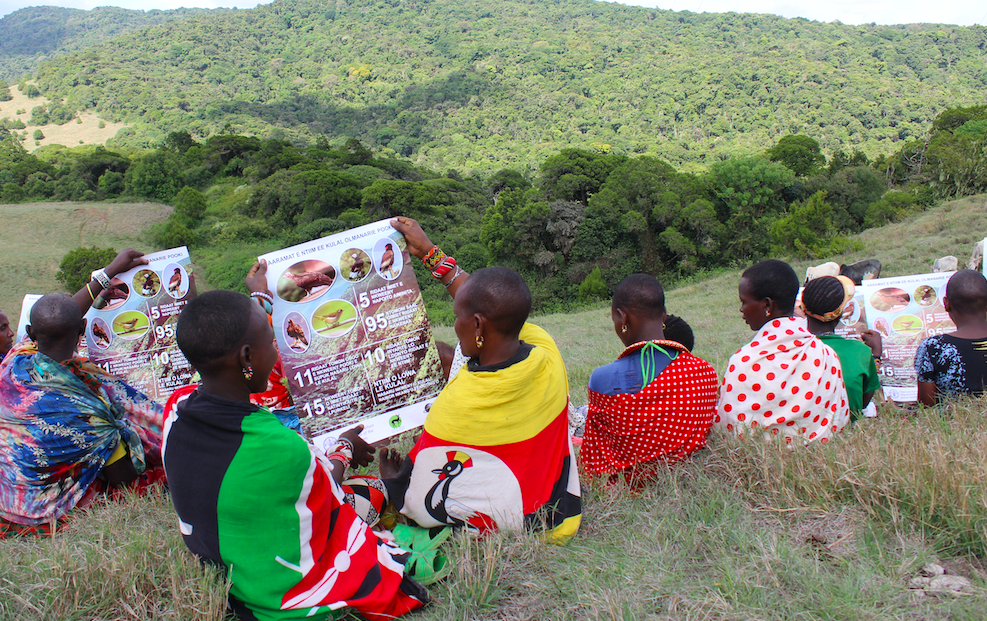 Members of the Mt Kulal community during a sensitisation session on the unique bird species found in the forest. Photo credit: East African Wild Life Society (EAWLS)
Members of the Mt Kulal community during a sensitisation session on the unique bird species found in the forest. Photo credit: East African Wild Life Society (EAWLS)The East African Wild Life Society has announced the designation of Mt Kulal in Marsabit county as
Kenya’s 70th Important Bird and Biodiversity Area, a landmark achievement
for conservation in the country.
The recognition follows a rapid
ornithological survey confirming Mt Kulal’s global ecological importance. The
mountain hosts the critically endangered white-headed and hooded vultures, 26
biome-restricted species and the Kulal white-eye—a bird found nowhere else in
the world.
The designation stems from a Global
Environment Facility (GEF)-funded project led by the Food and Agriculture
Organization (FAO-Kenya) and implemented by EAWLS between February and December
2024. Local communities, conservationists and government agencies were central
to the effort.
“Mt Kulal’s recognition as an IBA
is a win for both people and nature,” EAWLS project officer Ann Mukaindo said. She said it amplifies local voices in sustainable forest management and
nature-based livelihoods.
Beyond scientific validation, the
status strengthens the case for tackling deforestation, overgrazing and
climate change, while unlocking opportunities for eco-tourism, biodiversity
research and resource mobilisation.
Kenya now joins a growing list of
nations with formally recognised IBAs, identified using BirdLife
International’s criteria, which focus on globally threatened and
restricted-range species, biome-specific birds and key waterbird congregations.
These areas—whether public or private, protected or not—remain critical nodes
in global conservation.
Founded in 1961, EAWLS continues to position itself as the voice of conservation in East Africa through advocacy, research and community-led initiatives.
From publishing the Swara magazine to running campaigns
like the Forest Challenge, the society has remained a consistent force in
shaping environmental governance across Kenya, Tanzania and Uganda.
Mt Kulal’s designation as Kenya’s 70th Important Bird and Biodiversity Area is both a conservation win and a strategic lever for sustainable development. By placing a global spotlight on a fragile ecosystem, it enhances prospects for funding, eco-tourism and research while reinforcing local stewardship. Crucially, the recognition shows how community involvement and science-led advocacy can converge to protect biodiversity under pressure from deforestation, grazing and climate change. For Kenya, this milestone deepens its role in global conservation networks, while for Marsabit, it offers a chance to translate ecological value into tangible socio-economic benefits anchored in sustainability.












